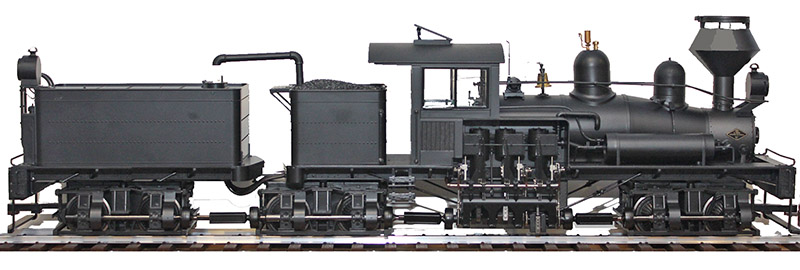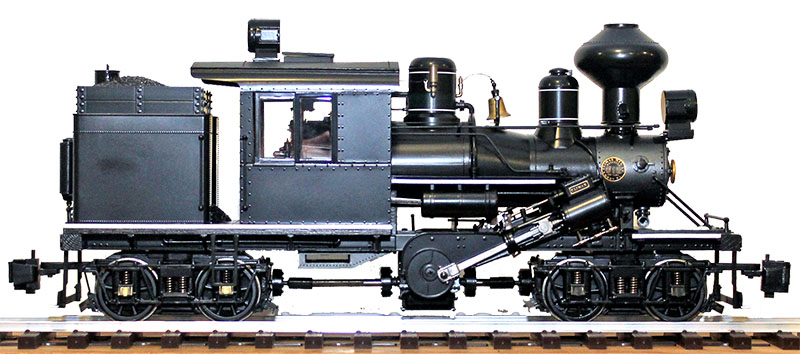Many logging railroads used geared steam locomotives instead of traditional side-rod-driven locomotives. Geared engines had short-wheelbase trucks with small wheels which provided a lot of traction on steep grades, and could navigate sharp curves and uneven track.
Note: I will provide much more information on these engines as this website develops.
The Shay locomotive had three vertical cylinders on the engineer's (right) side, with the boiler offset to the left. The crankshaft drove both axles on two or three trucks through bevel gears. Here is a photo of my Bachmann F scale 3-truck Shay.

The Climax locomotive had two slanted cylinders, one on each side of the boiler. Piston rods drove a shaft to a transmission in the center of the locomotive, from which driveshafts connected to gearboxes in the front and rear trucks. Here is a photo of my Bachmann F scale Climax.

It's interesting how these engines got water while out on the line, where there were no trackside water tanks. They dropped a large hose into a creek and used a "steam siphon" to suck the water up and into the engine's tank.
The steam siphon injected steam from the locomotive boiler through a nozzle inside the hose pointed toward the water tank. This created a vacuum that sucked water up the hose and into the tank.